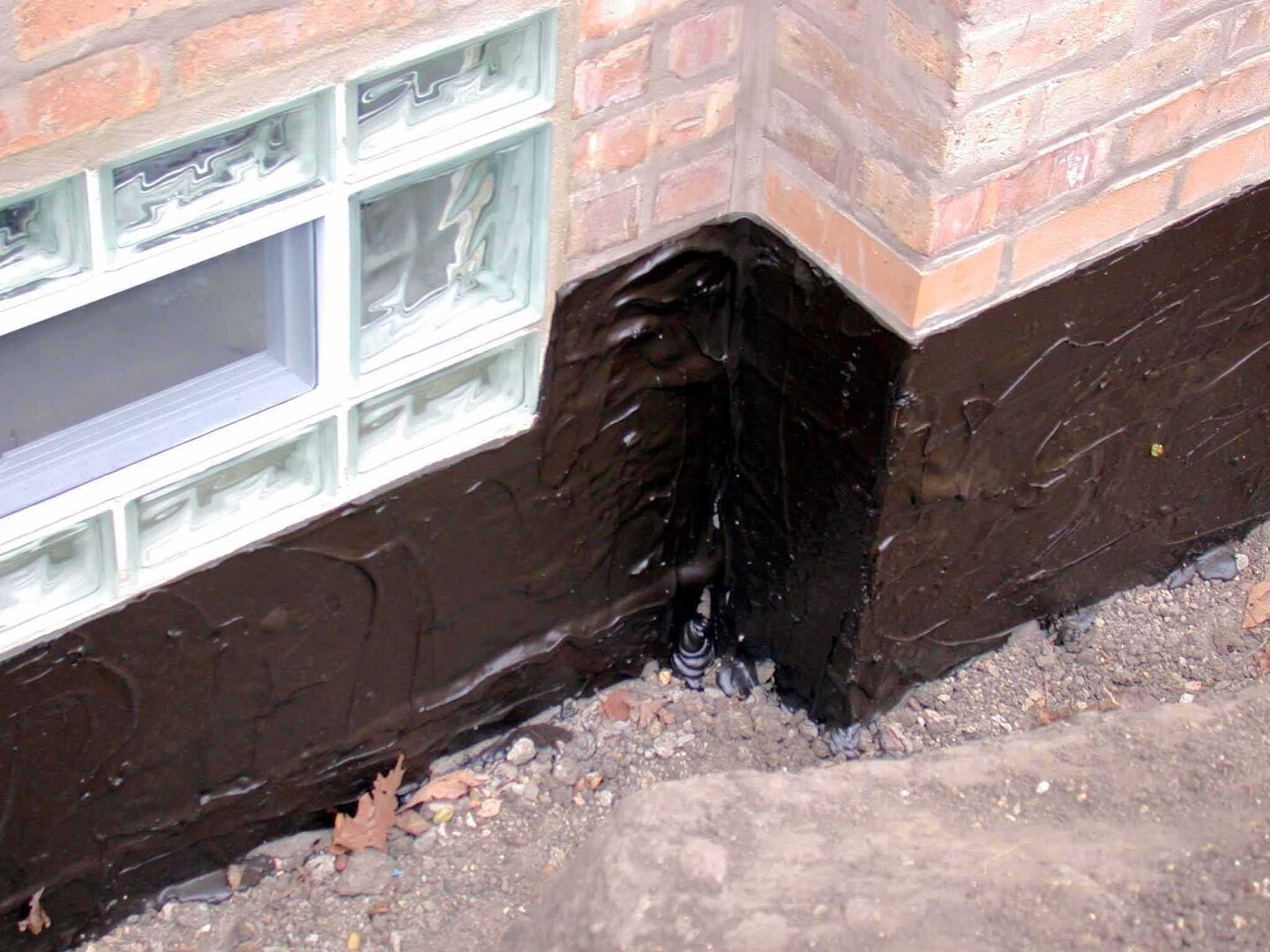Chicago Basement Waterproofing – Exterior Waterproofing Membrane

Many Chicago homeowners, when faced with water seepage through their basement walls, think that smearing something on the inside of the wall is the best way to stop it. There is no shortage of products on the market for this purpose – “waterproofing” paint, hydraulic cement, even rubbery gunk in spray cans – and a lot of so-called DIY experts who encourage their use.
All this stuff is a waste of time and money. The most effective way to stop water penetration through a foundation wall is to apply a real waterproofing seal to the outside of the wall – and I’m not talking about “damp-proofing,” either.
Why an Exterior Waterproofing Membrane is the Most Effective Way to Stop Foundation Wall Seepage
It may help to explain the difference between damp-proofing and waterproofing a foundation.
Both are what are called “positive side” processes that place a barrier between the outside water and the exterior surface of the foundation wall. The DIY products mentioned earlier attempt to create a “negative side” barrier, one in which the water is allowed to penetrate the foundation wall to be stopped on the inside before it reached the basement.
Damp-proofing, as the name implies, is a process designed to help prevent water penetration only from moist soil and not ground water that is under pressure. It uses a thin, asphalt-based compound that is sprayed onto the foundation walls quickly, usually during the construction process. It doesn’t effectively seal openings in the wall and is easily damaged during backfill.
Exterior waterproofing, on the other hand, involves the application, either with a trowel or heavy-duty sprayer, of a thick compound called an exterior waterproofing membrane, usually asphalt-modified urethane, that completely seals the foundation walls and protects them from ground water under pressure. It is effective on any type of foundation, particularly so on masonry like concrete block, stone or brick.
Once a thick coat of the waterproofing membrane has been applied to the foundation walls and allowed to cure, it is often covered with heavy-duty plastic drainage board. Fasteners for the board are installed before the membrane is applied so that they are sealed into the wall and don’t become sources for water penetration. The drainage board not only protects the membrane from wear or damage but it channels ground water down, between it and the foundation wall, to any exterior drain tile system that lies next to the foundation footings.
The exterior waterproofing membrane, drainage board and exterior drain tile form an effective system that will protect the basement against even the worst wet soil and ground water conditions. It is one of the most powerful weapons in the Chicago basement waterproofing arsenal.
If your home was “damp-proofed” when it was built, that’s not a bad thing – certainly better than nothing. But, if you are experiencing seepage through your basement walls then only an exterior waterproofing membrane will solve the problem. At U.S. Waterproofing, we’ve applied waterproofing membrane to literally thousands of homes and have the expertise to know exactly where it’s needed to solve the problem at your home. Why not ask for our free advice?




